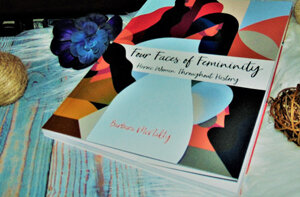On August 25, I'll be heading to San Antonio to attend and run workshops at two Hearts of Valor retreats! I'm already getting excited about the work I'll do there with retreat attendees. And in honor of that work being done in the great state of Texas, I want to dedicate a few posts to the amazing accomplishments of women who were born in the Lone Star State! And I'm kicking off the series with a historic figure who blazed many trails in her tragically short lifetime: fearless flier Bessie Coleman.
“You've never lived till you've flown!”
~ Bessie Coleman
Humble beginnings in rural Texas
Bessie Coleman was born in Atlanta, Texas in the winter of 1892, the tenth of thirteen children. Her parents were both sharecroppers—her father was of mixed black and Native American descent, and her mother was black. When Bessie was just nine years old, her father returned to his own home state of Oklahoma, leaving her mother to care for their giant brood of children.
Bessie was a bright child, an avid reader, and an eager learner. She read about the Wright Brothers' first flight with tremendous interest, dreaming of tackling such world-changing achievements herself. She aced all eight grades of elementary school, and saved the meagre money she made picking cotton to pay for further studies. In 1910, she used all her savings to enroll in the Colored Agricultural and Normal University in Langston, Oklahoma. She only completed one term before she ran out of money and had to return to her family in Waxahachie, Texas.
But that setback wouldn't stop her.
At the age of 23, Bessie followed one of her older brothers to Chicago. It was 1915, and she began listening to and reading stories of World War I pilots, which rekindled her childhood interest in aviation. Unable to chase her dream just yet, she became a beautician and worked as a manicurist in barbershops on the south side of Chicago. Two of her brothers had served in France during World War I, and her brother John would stop by the barbershop to tease her, saying, “I know something that French women do that you’ll never do. Fly!”
And that was all it took. Bessie swore then and there that she'd learn to fly, no matter what!
Triumph abroad
“I knew we had no aviators, neither men nor women, and I knew the race needed to be represented … so I thought it my duty to risk my life to learn aviation and to encourage flying among men and women of our race.”
~ Bessie Coleman
But no one would teach her.
Bessie applied to nearly every flight school in America, hoping to find an instructor. But she was black AND a woman, two huge strikes against her in the early 1900s. She was turned down everywhere she applied.
Determined to achieve her dream, Bessie consulted her friend Robert Abbott, a skilled reporter and publisher of the Chicago Weekly Defender. He did some investigating, found that aviation schools in France were far less prejudiced than those in America, and urged Bessie to study French so she could apply overseas.
She did. And by 1920, she was sailing across the Atlantic toward her destiny.
A career in aviation
“The air is the only place free from prejudices.”
~ Bessie Coleman
Bessie studied at France’s most famous flight school, Ecole d’Aviation des Freres Cadron et Le Crotoy, and earned her license to fly in only seven months! This made her the first woman of African-American and Native American descent to earn an aviation pilot's license. And she was rightfully proud of her accomplishment.
Yet she still struggled to carve out a place for herself. No one back home in America would sell her an airplane, refusing to do business with a black woman. No American company would hire her to fly commercially either. It was 1921 now, and the war was long over, so Bessie knew she'd need stunt-pilot skills if she was going to make a living in the air. She trained further with expert fliers and aircraft designers in France and Germany, then returned to the United States to launch her career in exhibition flying.
As she booked stunt shows all over the country, Bessie was vocal about using her fame and fortune to create and fund an aviation school for black American pilots. This dream drove her, and buoyed her during dark times.
Although Bessie herself had experienced outright discrimination, her exhibition flights appealed to both black and white audiences. Bessie was incredibly beautiful, and white people saw her as curiosity; a pretty, petite woman piloting an airplane. Black people were proud of her pioneering courage, and to them she symbolized the hope that someday more African-Americans could join her in the skies.
Bessie's first stunt flight took place in 1922, and she would only have four years to enjoy her career. On April 30, 1926, an accident during a rehearsal for an aerial show sent her plummeting to her death. She was only 34 years old.
Although she fought like a Warrior for her rights and beliefs, I see Bessie Coleman as someone who embodies the Lover archetype. She never married and never had children, but her brave heart and love for adventure informed every decision she made. She loved the idea of flying, and she crafted her life so she could experience the exhilaration of actual flight. She loved her community, and although she wasn't able to give them the gift of a flight school, she expressed her love for them with every breath. She was taken from us too soon, but not before she broke barriers, blazed trails, and followed her heart into the high-flying career of her dreams.
